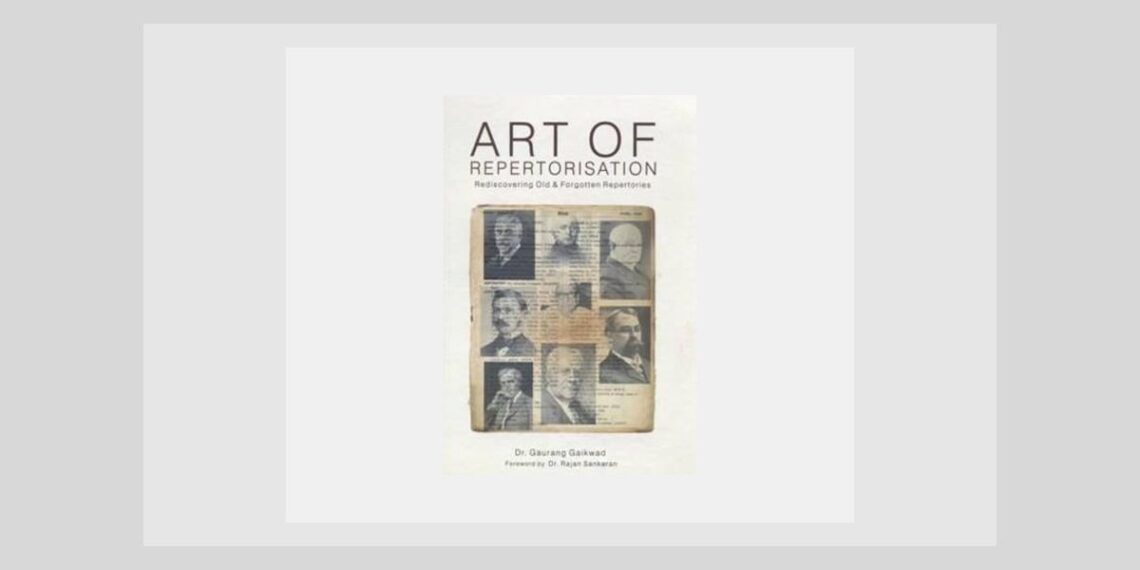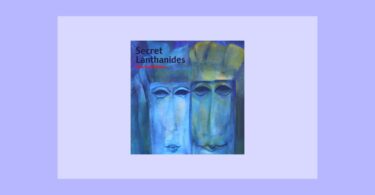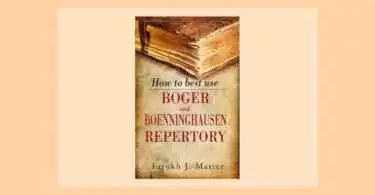Art of Repertorisation – Rediscovering Old and Forgotten Remedies by Dr. Gaurang Gaikwad
– reviewed by Vatsala Sperling.
Title: Art of Repertorisation – Rediscovering Old and Forgotten Remedies
Author Dr. Gaurang Gaikwad
Published by Gaurang Gaikwad, Mumbai, India, 2020
Hard cover, b/w, 557 pages
Reviewer: Vatsala Sperling

A book may be as professional and technical as possible, the very first thing I do is read all the forewords and acknowledgement. This part of the book humanizes the book for me and instead of remaining a tome of knowledge and information, a book becomes the voice of the author, and I can then relate to it, instead of simply reading it.
So, I did the same drill again and read the foreword by Dr Rajan Sankaran. He says, “One must be open to all influences, yet have a firm footing in the fundamentals of science.” The science of homeopathy is based on the Organon, the repertories and the materia medicas. All the new and varied schools of thoughts have sprung from them.
When I read this foreword by Dr. Sankaran, I get the idea that the author, Dr. Gaurang, has his feet firmly planted in the science of homeopathy, and therefore, he has written this book. Dr. Sankaran wishes for all practitioners, students – young and old, to aspire for a similar grounding in the fundamentals of our science.
Testimonials are an interesting aspect of the book too, because they tell us about what the leading lights, and experts in the field think about the book in question. Dr. Surimal Sarkar, a guru whose name Dr Gaurang takes in every one of his lectures, says, (this book is) “A must for the practitioner as well as students who have the intention to become successful in their practice.”
Dr Francois Bernaert says that “He (Dr. Gaurang) is present in the book, and we can feel his faith and his convictions.” Dr. Subhash Singh mentions, “I have seen him (Dr. Gaurang) evolve from a newly joined wide-eyes homeopathic intern to a mature clinician and teacher of international repute who is taking forward the legacy of Hahnemannian homeopathy.”
And, Dr. M K Sahani adds, “Going through each page of this monumental work, we can only feel the music tune coming out from the reportorial theatre of Dr. Gaurang.” There are several more testimonials from homeopaths of extensive fame and repute, and it would truly be a treat for you to read them before you plunge into the book.
Let us be honest, we get stuck in the multitudes of repertories. Often time we are clueless as to how to come out of our stuck-ness. Amongst the many available repertories, which is the best, which will point us to that one remedy that will vanquish the entire spectrum of the disease and restore the vital force to its fullest vitality after just one dose?
Our quest is almost endless and in desperation, sometimes we even swear off the use of our repertories and resort to finding quick answers by hook or by crook. Well, the good news is that on Dr Gaurang Gaikwad’s watch, such complacency would be history.
Now a few words about the author: The dispeller of complacency, Dr Gaikwad, began his own journey into the universe of repertories in the same point of confusion as the rest of us, with just one difference though, he had a passion for learning and mastering, he was keen to train with well-known experts and masters of our time, and he learned early on that “You can get whatever you want, provided you and ready to sacrifice anything for it.”
Personally, I do not know what he had to sacrifice (I can imagine, it must have been a lot of sacrifice). He indicates clearly that in order to possess a sound knowledge of repertory, self-study and practice are indispensable features.
Apparently, he has received a great deal of mastery, command, astuteness, insight, and deep grasp of the multitudes of repertories that intimidate us to no end. When he teaches a remedy, how to use it based on repertories, how to extract information from the materia medica, it is as if he is channeling the spirits of Allen, Boericke, Boger, Boennighausen, Clark, Kent, Knerr, Phatak, and Roberts.
The essence of their teachings and experiences come flowing out as he effortlessly connects these masters of the earlier centuries to the patients and the diseases we are seeing today. It is all one fluid, funny, insightful, and inspiring action.
Now, let us see if he has succeeded in transforming his hard-earned and deep knowledge into a book that I have set out to review, “Art of Repertorisation – Rediscovering Old And Forgotten Repertories”.
On page 548, the author presents the main features and benefits of nine different repertories that he has focused on in this book. After reading this information, you will be able to pick and choose a repertory that is most likely to be the most useful for a given case. For example, if you are dealing with an obscure case with a short history, paucity of symptoms, few, or no mental symptoms, and only pathological or objective symptoms, you would find Boger Boenninghausen’s characteristics repertory very useful.
In the manner of a workbook or exercise book, the author has given case exercises, 53 in all, with a command, “solve the cases first before looking at the remedies.” This section is meant to be a test for whether you have learned and mastered how to use the repertories and when to use which one.
Subsequently, these 53 cases have been analyzed and out of curiosity, I did a head count! A lion’s share of case solving was done using Phatak’s repertory. In order to enjoy these exercises fully, you need to read the chapters on Kent, Phatak, Boger-Boenninghausen, Boericke, Clarke, Knerr, and Roberts’ repertories.
Let us begin with Kent’s repertory. It is based on Kent’s opinion that to understand the man completely, his expressions at the level of generals must be given importance rather than looking at parts. In his repertory, mental symptoms are given utmost importance as disease primarily deranges the mental domain, then produces physical symptoms at the general level, and then the disease localizes producing particular symptoms.
Therefore, symptoms at the level of particulars should be considered only after mental and physical generals. Now, the author introduces us to the plan and construction of Kent’s repertory and by using several case examples, he then goes on to elaborate on the practical application of the rubrics.
All cases are very pithy, in the sense that they do not have any elaborate stories, but they give the bare minimum details that point toward rubrics. An interesting detail is when the author elaborates on explaining the origin / meaning of various rubrics.
Phatak’s repertory is also handled elaborately as well and the author describes the structure, how and when to use the repertory, case examples for use of various sections, 39 cases of various types from Phatak’s clinic cases illustrating use of Phatak’s repertory by the modern masters.
Phatak’s repertory is described as a small, concise, precise book that has very clear-cut rubrics with just a few remedies. The remedies given are clinically verified by masters like Kent, Clarke, Boericke, Boger, Burnett and Phatak himself, and the repertory is essentially based on Boger’s synoptic key.
The author recommends the use of Phatak’s repertory when the genius and the generals are prominent in a case because this repertory generalizes the local symptom and enables us to look at the same thing from different angles.
In a similar manner, you can read further about six more repertories. All along, the stress is in highlighting the uniqueness of each repertory that you are learning about. As Pierre Schmidt has said, repertories are well-known for using rubrics in interpretive manner and mechanical repertorization will lead to discovering the well-known polychrests for every patient, instead of revealing a gem of a smaller and unknown remedy.
This pitfall can be avoided by referring to many repertories, materia medicas, and provings so that the exact meaning of a rubric can be clearly understood, so that the repertorization process can become a form of art rather than a drudgery.
For this, the author quotes Pablo Picasso, “Learn the rules like a pro, so you can break them like an artist.” How darn true. When knowledge is absorbed at the cellular level, internalized into every neuron of our brain, and recalled at a crucial time, it gives us an impression of “intuitive prescribing”. But someone has said rightly, intuition is 99 % perspiration and 1 % inspiration.
Nobody mastered a skill or a trade in less than 10,000 hours, and as homeopaths, if we are to master the tools of our trade, repertories for example, we cannot have a lazy shortcut. We have to log our 10,000 hours and, learn not just one but as many repertories as possible. Only then we can be effective in our chosen discipline.
For enabling us to exceed our own expectations of perfection, our own perceived or real limitations, and our own innui at the thought of doing the hard work of mastering repertories, Dr. Gaurang Gaikwad says, let us become a better version of ourselves.
Hopefully, our better versions would read all the repertories that we can get hold of and enjoy them as if they were a romance-mystery-thriller. Fortunately, you will find that the inspiration to read all the repertories will come easily to you after you read Dr. Gaurang’s expertly written experiential book, “Art Of Repertorisation – Redisocovering Old And Forgotten Repertories”.
Happy reading.






